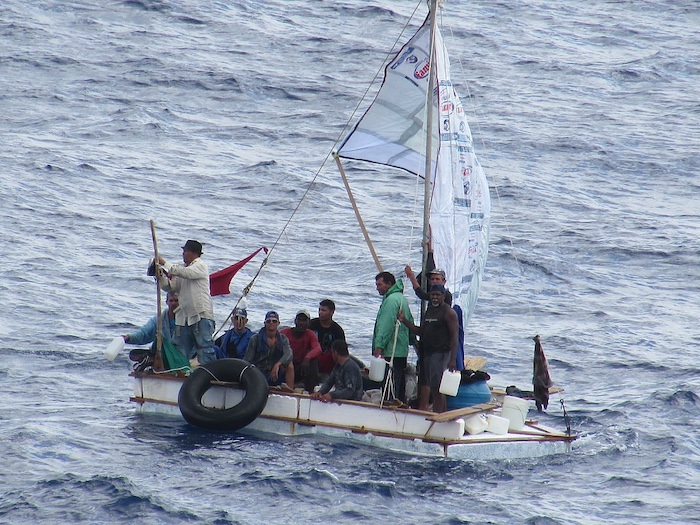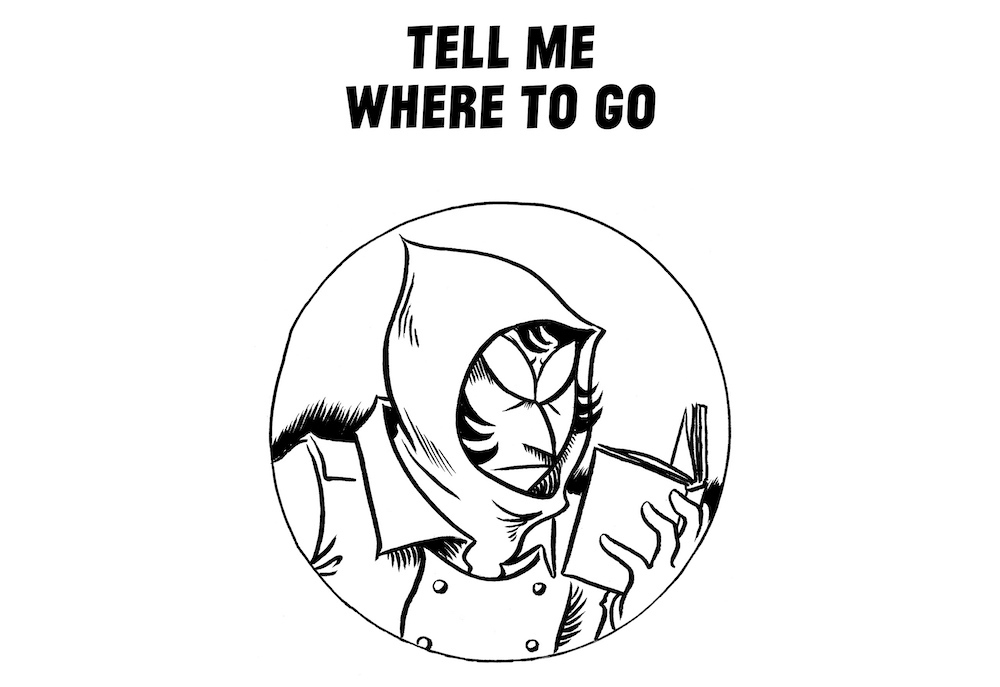A Sci-Fi Allegory of Migration to Spark Classroom Discussion
Posted on September 12, 2024

(Content warning: This story and blog post include mentions of death that may be disturbing to some readers.)
What does the phrase “Nothing to Declare” suggest to you? As the title of a devastating story from Cuban writer Anabel Enríquez Piñeiro, translated into English by Hillary Gulley, it comes to connote an almost unspeakable tragedy, a tragedy that could have been avoided—if only the world in which it took place were completely different.
That world, a metaphor for our own, is a place where a parent’s life savings secure his children's passage from the toxic mining moon of Io to safety back on Earth—or so they all believe. Written from the point of view of the eldest daughter, the story begins on a note of optimism, tinged with longing for the father they may never see again:
We no longer have to fear the eruptions on Io’s mining farms that scorched our skin, or the plumes of sulfur that burned our eyes and soured our lungs.
Now Io is below us, behind us, like the spherical prison of a thousand famished dragons locked in a never-ending battle. This freighter is wrenching us from its jaws forever . . . and away from Father’s never-failing goodnight kisses. We’re bound for Earth to see for ourselves that it’s not just some fairy tale we’ve heard since our eyes opened to Io’s red sky.
The true nature of their journey—where they are going and how they are getting there—is something much more sinister. It reflects the cynicism with which some people regard migrants, the way the culture dehumanizes them (in the story, space stowaways are referred to as “slick fish”), the ease with which they are lied to and exploited.
Although the story is accessible to reading levels beginning in the middle grades, we suggest caution and careful preparation before assigning it to younger students. There is nothing in the story that would earn it an “R” rating if it were a film, but the story’s ending is deeply upsetting.
(Spoilers:) The children slowly realize that they are not on an Earth-bound freighter, but rather, on a toxic waste transport, slowly suffocating in the poisoned air. Nor are they the first to make this doomed journey:
I suddenly remember all those times I saw freighters dock at Io and take off with slick fish from the satellite’s Equatorial Station. They, like us, would never know whether Earth is as blue as people say.
“Nothing to Declare” in the Classroom

Because the events of this story are so horrifying, some readers may find it difficult to believe that there could be any connection to real-life events. For this reason, it can be helpful to look at “Nothing to Declare” in conjunction with stories of real-life migrants, such as the ones recommended below:
- This short story was published during a wave of immigration in the mid-2010s, in which many migrants attempted the dangerous (and often expensive) journey to the US. Read coverage of the wave in the New York Times. (Readers might notice similarities between the challenges and dangers faced by these migrants and the characters in the short story.)
- Find out what the journey over land is like in an AP article that follows two young women and an infant through Nicaragua and Mexico, and in an NPR story that traces a mother’s migration through the jungle with her four-year-old son: "There was a moment where I couldn't go any further.”
- (CW: death) The migration journey is a harrowing one for migrants from other countries, too, and some communities are now mourning “brothers and sisters who died following their hope of a better life.” In 2022, 53 people died after having been abandoned in an overheating truck in Texas. Among the younger victims was a fourteen-year-old boy who’d hoped to help his family build a house. (Original Spanish-language version of article from Plaza Pública.)
Discussions of the issues this story raises have the potential to be transformational, but also to veer into victim blaming or other unhelpful directions. For guidance on leading conversations about controversial issues in the classroom, we recommend the articles below and an educator-generated “toolbox” that came out of a WWB Campus seminar several years ago:
- “Teachers Should Examine Biases When Discussing Sensitive Topics” (Matthew Homrich-Knieling's comments are especially relevant)
- “Uncomfortable Conversations: Tools to Teach Current Events and Controversial Issues”
Pairs Well with . . .

On WWB Campus:
- “Tell Me Where to Go,” another sci-fi allegory of asylum seeking, from Korea (by Kim Han-min, tr. Jamie Chang and Sora Kim-Russell)
- “The Gringo Champion,” a Mexican story of contemporary migration (by Aura Xilonen, tr. Andrea Rosenberg)
Elsewhere:
- Margaret Atwood’s The Handmaid’s Tale
- Mary Shelley’s Frankenstein
- Ursula K. le Guin’s short story “The Ones Who Walk Away from Omelas,” available in the eponymous collection
- Ray Bradbury’s novel-in-stories The Martian Chronicles
- George Orwell’s 1984
Potential Assignments:
- Essay: Does this story seem to work as an allegory for contemporary migration? Why or why not?
- Fiction: Try writing your own allegory for an issue you care about.
By Nadia Kalman, with research by Maggie Vlietstra.



